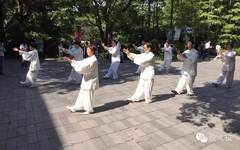
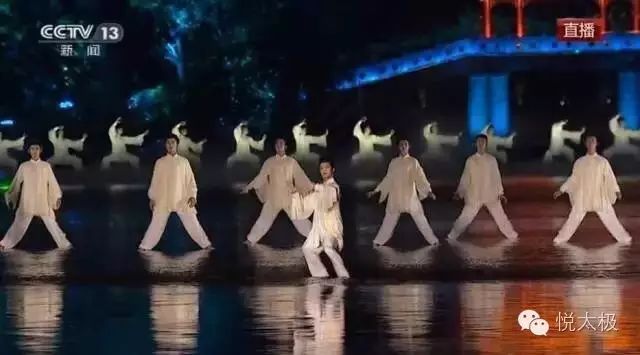
The so-called forms refer to the complete set of Tai Chi postures. The term “fixed postures” refers to the specific requirements for each posture’s movements. For beginners, the main focus should be on mastering the forms and ensuring correct positioning, while also paying attention to the standardization of postures. After a period of practice, once the forms are basically mastered, the emphasis must shift to the correctness of the postures. Only by ensuring the accuracy of the postures and the movement paths can one gradually cultivate internal energy (nei qi) and achieve the intended effects of Tai Chi.
Beginners should not set their expectations too high or rush the process. This is similar to writing; one must first understand the strokes such as vertical, horizontal, dots, and hooks, which can form squares. Practicing Tai Chi is the same; beginners should focus on clearly defining the positions and directions of their hands and feet for each fixed posture, as well as the basic movement paths. However, they must also place absolute importance on accuracy and the principles of the forms, understanding the movement directions, angles, and sequences of the postures must be absolutely correct, including the positions, directions, and angles of the hands and feet.
After a period of training, one can master the forms, at which point one can further consider the requirements of the movements, correcting each posture from foot to head, while carefully contemplating and overcoming impatience. The practice should be slowed down to facilitate reflection on the correctness of the movements. As for the inevitable mistakes, such as raised shoulders, locked elbows, shallow breathing, and trembling hands and feet, these should not be corrected at this stage but must be noted.
The accuracy of Tai Chi movements is closely related to the body’s meridians and skeletal structure. The forms can only align with the optimal stress state of the skeleton, which is essential for ensuring the best flow of the meridians, allowing for the generation of overall power. Only when the force can be transmitted down to the feet can a solid foundation be laid for future learning. With correct postures and diligent practice, one can transition to the second stage of training after some time.
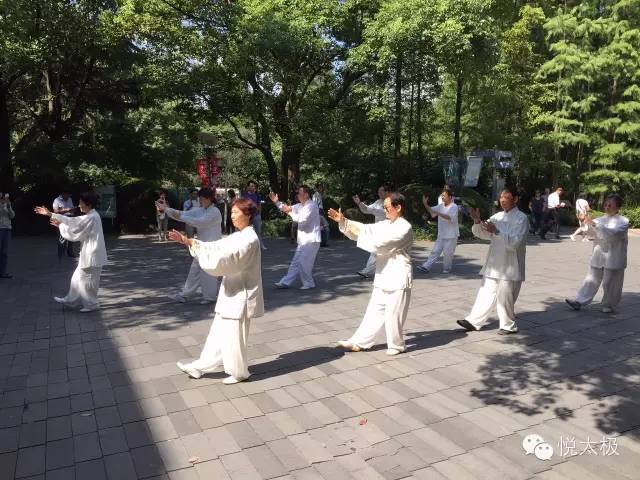
“Posture” refers to the requirements for all parts of the body during practice. To facilitate the flexibility and relaxation of all joints in the future, one must consciously perform some actions to stretch and relax the muscles and bones, such as opening the upper and lower parts of the body and pushing the palms outward. This stage can also include practicing some power-generating movements, such as the “Vajra Pounding the Mortar” and “Covering Hand Elbow Punch”. However, one must strive to relax and avoid using brute force. The “Theory of Boxing” states: “One layer deeper, one layer of wonders without end.”
During practice, one must maintain a centered and upright posture, neither leaning nor swaying. Attention must not only be paid to adjusting the posture but also to ensuring that the hands are lifted and not slack or weak. Through this period of practice, the posture will be adjusted, and the positions will be basically correct. Only under accurate conditions can the meridians flow smoothly. As accuracy improves, the downward sinking and continuous connection will gradually stimulate internal energy, marking the beginning of the process of externally prompting internal energy. Although one may sometimes feel the activity of internal energy during this period, it may also be intermittent, akin to “water without a source, smoke without fuel”. Externally, the movements may not be perfectly smooth, manifesting as rigid or empty force, and in combat, it may appear as having strength but lacking control, with a heavy head and light feet, hence referred to as “one yin and nine yang root head stick”.
The main issues that arise in the second stage are primarily related to improper posture, such as an uncentered body, locked chest, and raised shoulders. The fundamental reasons for these issues are twofold:
First, insufficient support from the legs makes it difficult for the body to relax.
Second, there is a lack of understanding of the meaning of “relaxation”, making it hard to strive towards the goal of relaxation. The term “relaxation” does not mean to exert no effort; rather, it means that the movements must align with the optimal stress state of the body’s skeleton, allowing all parts to naturally coordinate and relax, which is beneficial for the sinking of qi. The renowned Tai Chi master Chen Xin stated in his work “Illustrated Explanation of Chen Style Tai Chi” that an important point in practicing Tai Chi is that “the joints must align”. This means that the movements must conform to the optimal stress state of the skeleton. The “Theory of Tai Chi” states: “The body must be upright as the foundation, and relaxation should be natural throughout the body.” This means that the practice of forms must fundamentally focus on maintaining an upright posture. Therefore, the term “upright” has two meanings: one refers to the correct positioning of the trunk, limbs, and head, meaning the body is neither leaning nor swaying; the other refers to maintaining relative balance in a consciously tilted position, such as during the upward and downward movements of stepping (which is essentially the opening and closing of the upper and lower body).
Initially, due to these issues not being understood or attended to, combined with a lack of skill, the aforementioned problems are inevitably encountered. The solution, apart from continuous adjustments and checks from the instructor, is for the practitioner to earnestly contemplate and understand the internal meaning of maintaining an upright posture and relaxing the entire body. At the same time, based on one’s physical condition, persistent practice will gradually strengthen the leg muscles, improve accuracy, and allow the body to relax, leading to the sinking of the chest, back, ribs, and diaphragm. This will harmonize the internal qi’s rise and fall, enhance lung capacity, and naturally eliminate issues such as locked chest.
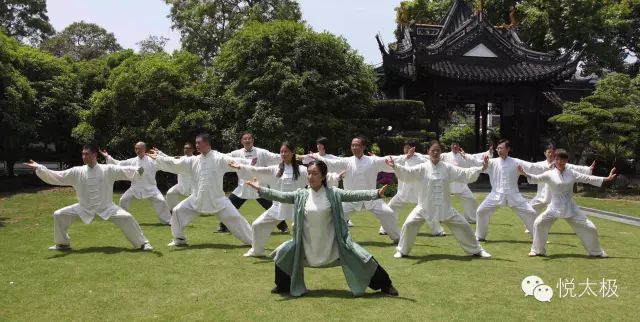
“Meridians” refer to the pathways and networks that intricately connect throughout the body, linking the internal organs and the external surface. They serve as channels for regulating the body and circulating qi and blood. “Qi” is the subtle material that constitutes and sustains human life activities, consisting of extremely fine particles that are difficult to perceive directly. Therefore, its existence can only be manifested through various changes perceived by human senses. The sources of qi in the human body include:
First, the essence and qi inherited from one’s parents;
Second, the essence derived from food and water, as well as the yang qi present in nature, formed through the physiological functions of the spleen, lungs, and kidneys.
The qi we refer to now is originally part of the theoretical system of Traditional Chinese Medicine (TCM), which, when introduced into martial arts, gradually formed a basic concept with martial connotations. At this point, it does not simply refer to the qi in medical theory but also includes the internal energy in martial arts, which is the internal energy of Tai Chi. The stimulation and cultivation of internal energy must rely on both the innate and acquired essence as a material foundation. It is well known that internal energy can be generated in qigong and internal martial arts. Tai Chi is an internal martial art, meaning that internal energy must be cultivated within the body. Qigong generates internal energy through specific postures and intentions.
As for Tai Chi, there is a saying in the birthplace of Chen-style Tai Chi: “In the beginning, practice Tai Chi by externally prompting internal energy, and in the end, use internal energy to prompt external form.” This means that to reach the stage of using internal energy to prompt external form, one must first have internal energy within. The internal energy of Tai Chi is cultivated through external forms. This raises some questions: why is there a distinction between internal and external martial arts? Why can movements such as free fighting, dancing, or Mulan boxing not generate internal energy? This indicates that the generation of internal energy in Tai Chi is only possible through specific and accurate external forms that fully align with the principles of Tai Chi. Therefore, Shi Shou Wu stated in “Records of the Immortals of Xishan”: “Form is the residence of qi, and qi is the master of form. Use form to nourish qi, and qi strengthens and solidifies form.” This emphasizes the critical importance of form.
To cultivate internal energy in Tai Chi, it is impossible without specific forms, which aligns with the principle of “qi is determined by form, and form is determined by qi”. Moreover, the guidance must have the correct positioning, clear movement paths, and standardized sequences. For example, in the movement of “Vajra Pounding the Mortar” where the right foot steps forward and both hands open outward, it requires sinking the abdomen, opening the Mingmen (Gate of Life), and lifting the chest while pulling the back, using the shoulders to guide the elbows and the elbows to guide the hands in a segmental opening. In this movement pattern, one can observe that the hands are opening while the chest is closing, aligning with the Tai Chi principle of opening and closing. The movement contains both opening and closing, which also aligns with the saying that “Tai Chi is a movement of contradictions that are unified”; at the same time, this movement is a typical action of externally prompting internal energy.
Through these specific movements and patterns, internal energy will gradually begin to circulate within the body. Of course, it is not reliant on just one movement, but this movement pattern and concept must be integrated throughout the entire set of Tai Chi. After this stage of adjusting the forms, the internal meridians will remain open, and with the training of specific movements that align with Tai Chi principles, internal energy can be stimulated. At this point, one can also begin to feel the flow of internal energy, and the practice of Tai Chi becomes increasingly compelling. However, during this stage, the sensation of internal energy may be intermittent, and after a period, it may completely disappear, which is normal and indicates that the flow of qi in the meridians is not smooth, and the movement of internal energy is weak.
This summarizes the dual nature of qi in the realm of martial arts, serving as both a material foundation and a functional effect. When one reaches a certain level of practice, a mysterious feeling arises that is difficult to articulate. During this stage, it is inevitable to encounter issues such as stiffness and loss of balance, which can hinder the flow of internal energy and prevent qi from reaching the extremities (i.e., the tips of the hands and feet).
Therefore, during practice, it is essential to focus on the accuracy of movements to ensure the smooth flow of the meridians. By adhering to specific movements that align with Tai Chi principles, one can facilitate the generation and movement of internal energy. This will promote the circulation and vitality of qi and blood, gradually generating the internal energy of Tai Chi. Based on these principles, practitioners should continuously adjust and reflect through the use of principles, practicing at a slow pace rather than rushing. The external forms of each movement should ideally align with the awareness of internal energy. With further practice over time, the flow of internal energy will naturally become smoother, and stiffness and clumsiness will gradually be overcome, allowing the Tai Chi movements to achieve a state of seamless continuity. Internal energy will then generate rhythmic surges and flows according to the requirements of the movements, achieving a state of unified qi.
For students, this stage is the most likely time to lose confidence and give up. The main reason is that during practice, due to issues such as loss of balance and stiffness, and the fluctuations of internal energy, there may be a sense of disconnection in various body parts. Sometimes one may feel a surge of energy and smoothness, but in push hands, it may not be effective at all. Misinterpreting these objective patterns as a lack of transmission of secrets from the teacher can lead to feelings of discouragement. In reality, as long as one follows the rules and persists, success is assured.
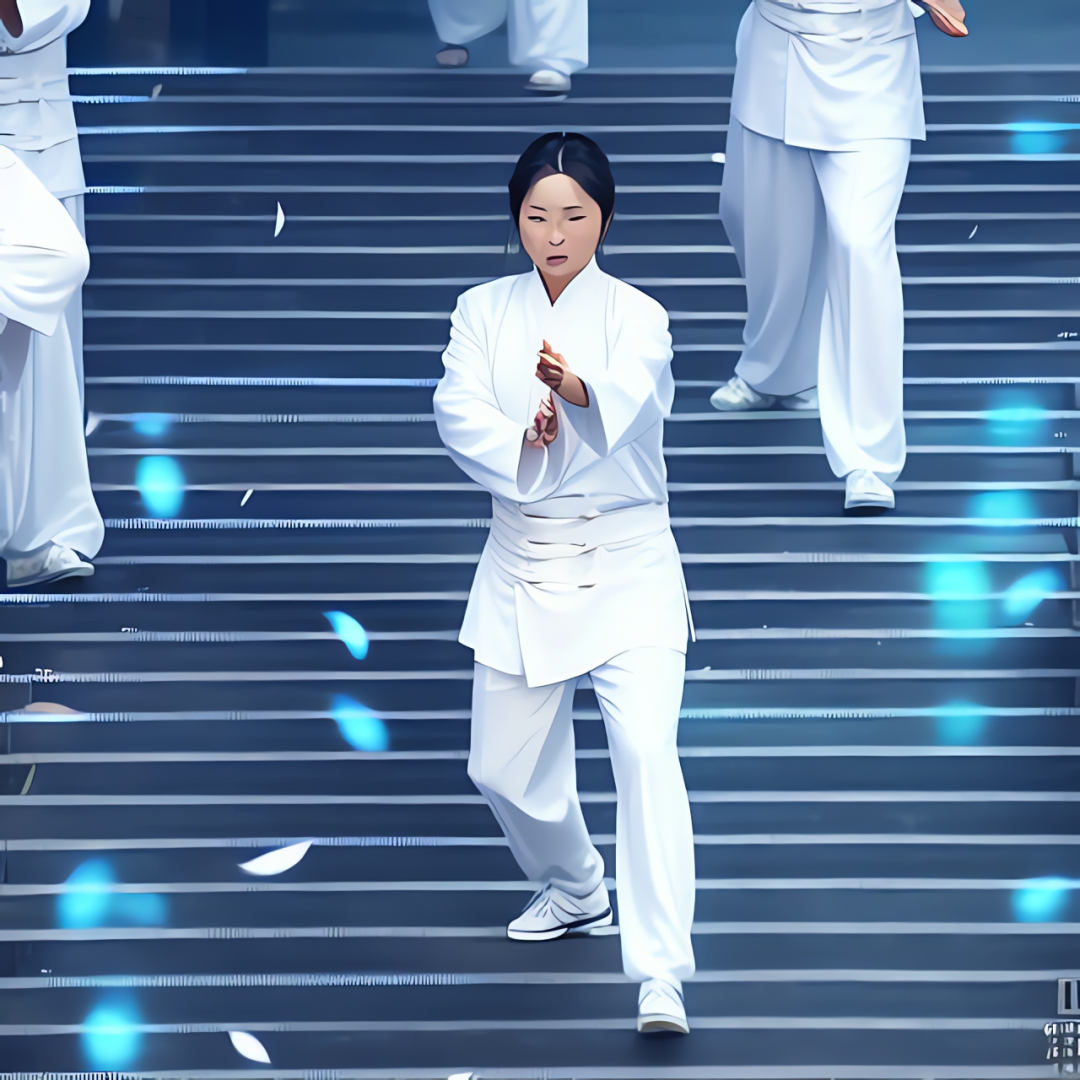
“Form” refers to the physical body, which is the external manifestation of the movements. “Qi” refers to internal energy, which includes the innate essence inherited from parents, the essence derived from food and water, and the pure qi from nature, as well as the internal energy generated by Tai Chi movements. These fine particles circulate throughout the body, renewing themselves continuously. From a medical perspective, form and qi are unified, interdependent, and mutually beneficial. When internal energy accumulates within the body, one can use the mind to guide qi and the intention to direct qi. The “Boxing Manual” states: “Use the mind to guide qi, ensuring it is steady, and it can be gathered into the bones.” It also states: “Use qi to move the body, ensuring it flows naturally.”
It can be seen that the “mind” referred to in the “Boxing Manual” corresponds to the spirit in TCM, encompassing the brain’s conscious thought processes. Therefore, in this stage, every movement practiced must pay attention to guiding the external form, using the mind to direct qi, and allowing qi to move the body naturally. Only through repeated practice of the integration of form and qi, careful contemplation, and diligent training can one develop a deeper skill, allowing internal energy to circulate continuously within the body. At this point, it is crucial to strictly follow the principles, clarifying the sequence of each movement, ensuring a seamless connection, and stimulating internal energy so that qi flows rhythmically with the external form and consciousness. This requires us to strive for unity throughout the body. In this stage of practice, if the body and hands, or the internal and external aspects are not sufficiently coordinated, contradictions will arise, affecting the flow of internal energy, making it difficult for intention and form to integrate. For example, issues may arise with the speed of movement and the accuracy of body positioning, leading to disjointedness, which manifests in practice as the body moving slowly while the hands move quickly, or the eyes not following the movements, resulting in a lack of coherence.
The “Boxing Verse” states: “If the hands arrive but the body does not, one cannot strike effectively; if the body arrives, the hands also arrive, striking as if urging grass to grow.” This emphasizes the importance of the integration of form and qi, and the coordination of the body and limbs. Common issues at this stage include loss of balance and stiffness. Loss of balance arises from a misunderstanding of the meaning of relaxation. Not using force leads to loss of balance, while using a little force leads to stiffness. Additionally, excessive chest lifting can cause bending at the waist, while excessive sinking can lead to a collapsed abdomen and filled chest. Therefore, while paying attention to the accurate positioning and movement paths of the body, one must also focus on the integration of internal energy and external form. The external form must naturally open and close in accordance with the expression of internal energy. This indicates that in this stage of practice, emphasis should be placed on the principles, and great attention should be paid to the integration of principles and physical posture. This is a guidance of both thought and form, achieving the unity of mind, intention, qi, and form, allowing internal energy to flow continuously and cyclically. Through diligent practice in this stage, with the accumulation of accurate forms, the overall strength of the body will emerge, providing a considerable level of skill. However, in combat, the power may still be limited, often feeling like the strength is not fully utilized. This indicates a lack of mastery of the skills of knowing oneself and the opponent, leading to missed opportunities and ineffective follow-ups, which is merely reaching the level of “two yin and eight yang are free fighting”, also known as the stage of “jin” (force).
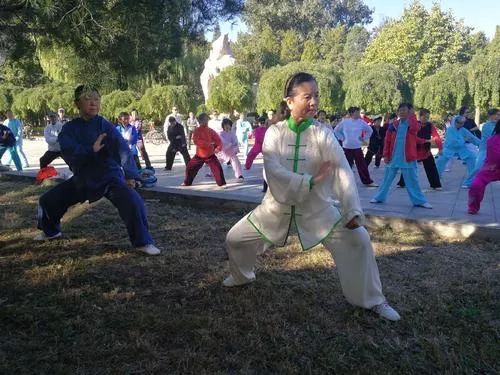
“Unity of body and mind, consistency of internal and external” means that through the integration of form and qi, internal energy circulates throughout the body, both internally and externally, like a continuous loop. This is achieved through repeated contemplation, experience, and diligent practice. The “Theory of Boxing” states: “Tai Chi is all about strength; do not act recklessly. Although the postures may differ, the strength returns to unity. This unity refers to the connection from the feet to the top, with internal organs, muscles, and bones, skin, and flesh, all linked as one.” “Break without opening, collide without scattering; when the upper part moves, the lower part follows; when the lower part moves, the upper part leads; when both parts move, the middle responds; when the middle moves, the upper and lower harmonize; internal and external connect, front and back rely on each other, this is called the unity of qi.” This passage specifically elaborates on the manifestation of unity of body and mind, consistency of internal and external, and the holistic view of the unity of qi. It can be seen that although Tai Chi is ever-changing, its strength ultimately converges into one. In summary, Tai Chi can be discussed in terms of yin and yang, and manifested in terms of up and down, opening and closing, advancing and retreating, internal and external, form and qi, etc. During this period of practice, in addition to consistently practicing the forms, one can also combine practice with testing to verify and correct the correctness of the movements.
So how can one determine the correctness of the movements? We propose that every movement in Tai Chi must be tested, requiring practitioners to allow others to push them from different directions to check whether there is resistance in the direction of opposition and whether there is loss in the direction of following. In other words, one must allow the person pushing to complete the movement without exerting force. This allows one to feel the mutual opposition, interdependence, and transformation between them. Based on the characteristics of Tai Chi’s yin and yang, one seeks to achieve unity of body and mind, consistency of internal and external, allowing internal energy to flow continuously and cyclically, returning to the holistic unity of Tai Chi.
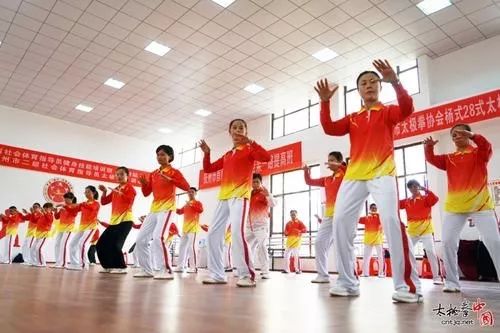
“Solidify the foundation and enrich internal energy” means that based on the previous stage, one must further stabilize the lower body to promote the fullness and richness of internal energy. After the previous training, generally speaking, one can feel the presence of qi, but many people focus solely on the sensation of qi in the body, neglecting the fundamental practice of refining essence into qi. According to the ancient Daoist health-preserving principle “refine essence into qi, refine qi into spirit, and refine spirit into emptiness”, we can understand that practice will lead to changes in essence, qi, and spirit. In other words, the components and functions of essence, qi, and spirit are different; essence is not equal to qi, and qi is not equal to spirit. It also tells us that through practice, essence can transform into qi, and then qi can transform into spirit.
The “Theory of Boxing” states: “When the foundation is solid, the branches and leaves will flourish,” and “nurturing the roots will lead to flourishing branches and leaves.” Here, the term “roots” refers to the foundation, which is the lower body. “When the lower body is stable, the upper limbs will be light and natural.” In terms of qi, the “foundation” refers to the original qi, which is stored in the kidneys. When kidney qi is sufficient, one will have abundant energy, which is the essence of “foundation solid”.
When the foundation is solid, the flow will be rich. A stable foundation and enriched internal energy are like the flowing waters of the Yangtze River, endlessly abundant, inexhaustible, and reflecting immense strength, flowing naturally, producing astonishing combat effects. Therefore, every level must be practiced; otherwise, there will be deficiencies, and one must not neglect any aspect.
The term “nurturing the source” refers to the root or origin. “Nurturing the source leads to the flow of channels.” This indicates that the previous accuracy and the continuous sinking of qi are methods of nurturing the roots and sources, which are the foundation for the continuous transformation of qi. When the foundation is solid and the flow is rich, the internal energy will be abundant, like the flowing waters of the Yangtze River, endlessly abundant, inexhaustible, and reflecting immense strength, flowing naturally, producing astonishing combat effects. Therefore, every level must be practiced; otherwise, there will be deficiencies, and one must not neglect any aspect.
Experience the accurate paths and changes of strength in each movement, as well as the application of these movements in push hands and combat. As mentioned earlier, during practice, the body must achieve the integration of intention and qi, and the unity of form and qi, but one must also separately practice individual movements and some power-generating actions. This allows for a more thorough understanding of the accurate paths and changes of strength in each movement, as well as the application of these movements in push hands and combat. Additionally, it increases the explosive power under the condition of a solid foundation. Therefore, in combat or push hands, one can randomly follow the momentum, leading to opportunities to counter the opponent, but it cannot be done cleanly and smoothly. Although one may have a higher skill level than the opponent, allowing oneself to win, the opponent may not be convinced. Thus, the push hands song states: “Three yin and seven yang still feel hard.” This indicates that we are in the stage of “skill”.

